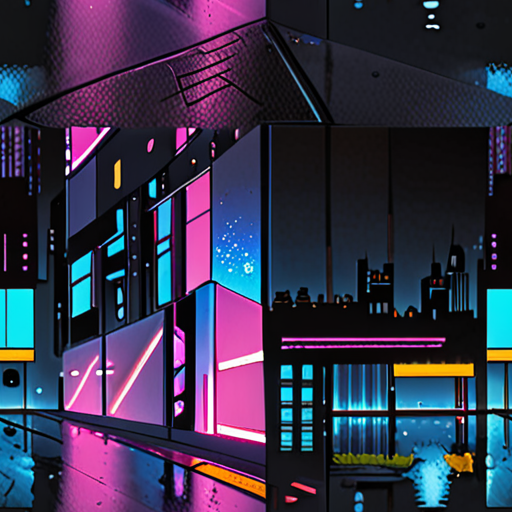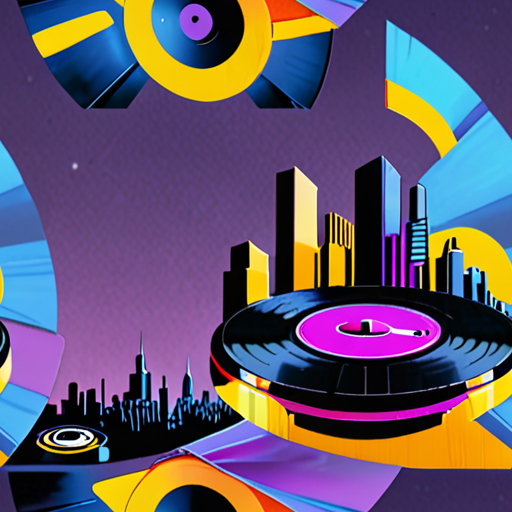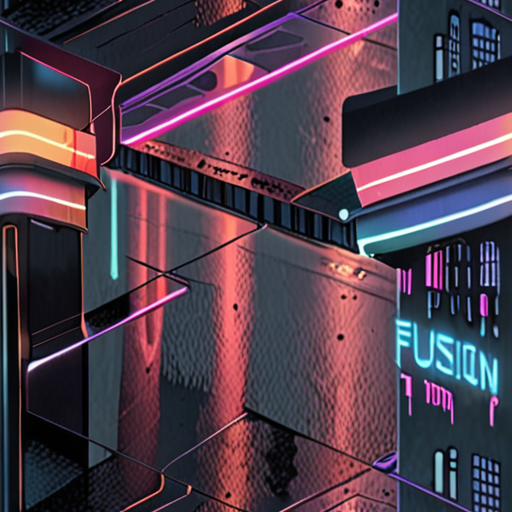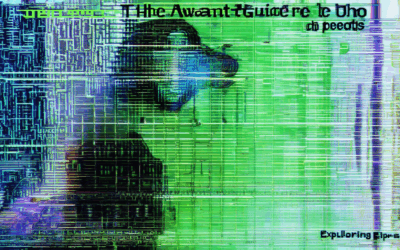For aspiring musicians looking to stand out in the competitive world of hip-hop, creating unique and captivating experimental rap beats is crucial. These innovative sounds not only showcase an artist’s creativity but also help establish their individual style and voice within the genre. However, producing exceptional experimental rap beats requires a deep understanding of the evolution of hip-hop, its various sub-genres, and the role of electronic music in shaping the sound of contemporary rap.

What is an Experimental Rapper?
As a hip-hop enthusiast, I’m always excited to dive into the world of experimental rap, where boundaries are pushed and creativity knows no limits.
- Experimental Hip Hop often features unconventional vocal delivery, complex rhythms, and unconventional instrumentation
- It is often seen as a more experimental and avant-garde form of hip hop, and is often associated with the underground hip hop scene
The Evolution of Experimental Rap
From its roots in the 1970s to the present day, experimental rap has undergone significant transformations, incorporating various styles and genres along the way.
- Abstract Hip Hop is a cultural platform dedicated to exploring the world of hip hop music, art, and culture
- The site features blog posts, artist interviews, music reviews, and in-depth articles on the latest trends in the abstract and experimental hip hop scene
- Abstract Hip Hop emphasizes avant-garde production techniques, spoken word, jazz, funk, and electronic influences, offering readers a unique insight into the underground hip hop movement
Characteristics of Experimental Rap
So, what sets experimental rap apart from traditional hip hop? Here are some key characteristics:
- Unconventional vocal delivery: Experimentation with pitch, tone, and cadence creates a unique sonic landscape
- Complex rhythms: Intricate drum patterns and time signatures push the boundaries of traditional hip hop beats
- Unconventional instrumentation: Incorporating non-traditional instruments and sounds adds texture and depth to the music
Notable Experimental Rappers
Some notable figures in the experimental rap scene include:
- Kendrick Lamar: Known for his storytelling ability and fusion of jazz and funk influences
- A$AP Rocky: Blends hip hop with psychedelic rock and electronic elements
- Vince Staples: Pushes the boundaries of lyrical complexity and incorporates elements of punk and electronic music
Conclusion
Experimental rap is a constantly evolving genre, pushing the limits of creativity and innovation in hip hop music. By embracing experimentation and taking risks, artists can create something truly unique and groundbreaking.
What Genre is Experimental Beats?
Experimental Electronic music is a genre of music that combines elements of electronic music with experimental techniques.
- It is often characterized by its use of unconventional sound sources, such as field recordings, found sounds, and manipulated audio.
- This genre pushes the boundaries of traditional music composition and production, incorporating elements of noise, ambient, and avant-garde styles.
Characteristics of Experimental Beats
Some common characteristics of experimental beats include:
- Unconventional sound sources, such as field recordings, found sounds, and manipulated audio.
- Experimentation with unusual time signatures, tempo changes, and rhythmic patterns.
- Heavy use of effects processing, distortion, and reverb to create unique sonic textures.
- Incorporation of elements from other genres, such as jazz, classical, and folk music.
Subgenres of Experimental Beats
There are several subgenres of experimental beats, including:
- Ambient: Characterized by calming, atmospheric soundscapes and often used for relaxation or meditation.
- Noise: Emphasizes dissonant, chaotic sounds and often used to challenge traditional notions of music.
- Glitch Hop: Incorporates intentional errors and glitches into the music, often creating a sense of tension and unease.
- Drone: Features sustained, repetitive sounds and often used to create a sense of atmosphere or mood.
Artists Associated with Experimental Beats
Some notable artists associated with experimental beats include:
- Aphex Twin: Known for his eclectic and innovative approach to electronic music.
- Oneohtrix Point Never: A pioneer of the noise and glitch hop genres.
- Fennesz: An Austrian musician known for his work in the ambient and drone genres.
- Squarepusher: A British musician who blends elements of drum and bass, IDM, and experimental electronica.

How to Find Beats for Rap
I’m always on the lookout for fresh beats to fuel my rap creations, and I’ve got some go-to spots to share with you.
- Free Sample Websites: Sites like FreeSound , SampleSwap , and MusicRadar offer a treasure trove of free samples that can be used in your beats.
- Record Stores: Pay a visit to local record shops and thrift stores – you might stumble upon some hidden gems like vinyl records from genres like funk, soul, jazz, and rock, which are often sampled in hip-hop.
- Creative Commons Licenses: Explore websites like SoundCloud and CCMixter , where artists share their work under Creative Commons licenses, allowing you to use their tracks for free or with attribution.
- Online Marketplaces: Check out online marketplaces like BeatStars and Airbit , where producers sell exclusive beats and instrumentals.
- Collaborate with Producers: Reach out to fellow musicians and producers, and collaborate on beats together. Not only will you get access to fresh sounds, but you’ll also learn from each other’s creative processes.
- Experiment with Loops and Samples: Don’t be afraid to experiment with loops and samples from various genres. You might discover unexpected combinations that spark inspiration for your next track.
Remember, finding the perfect beat is just the beginning. The real magic happens when you infuse your own style and creativity into the music.
Tips for Working with Beats
- Keep it Simple: Don’t feel pressured to over-produce your track. Sometimes, simplicity is key to creating a catchy and memorable beat.
- Play with Tempo and Time Signature: Experiment with different tempos and time signatures to add variety to your track and keep listeners engaged.
- Add Depth with Layers: Build layers of sound by incorporating percussion, basslines, and melodies to create a rich and immersive atmosphere.
- Don’t Forget the Hook: Craft a hook that grabs listeners’ attention and sticks in their heads. A great hook can make all the difference in making your track stand out.
Conclusion is not necessary

What Type of Beats Do Rappers Use?
Rappers often experiment with various types of beats to create unique soundscapes.
- Boom Bap : A classic hip-hop beat characterized by its heavy, syncopated rhythms and deep basslines.
- Trap : A subgenre of hip-hop that originated in the Southern United States, known for its heavy, synthesized sounds and often features 808 drums.
- Drill : A subgenre of hip-hop that emerged in Chicago, characterized by its dark, atmospheric soundscapes and often features heavy, distorted 808 drums.
- Jazz Rap : A subgenre of hip-hop that incorporates elements of jazz music, often featuring complex time signatures and improvisational elements.
- Conscious Rap : A subgenre of hip-hop that focuses on socially conscious lyrics and often features mellow, jazzy beats.
The drum machine is a crucial tool in hip-hop production, allowing producers to create intricate patterns and rhythms.
- The Analog Roland TR808 is a legendary drum machine that has been used by countless hip-hop producers due to its versatility and rich sound.
- The Digital Audio Workstation (DAW) has revolutionized hip-hop production, enabling producers to create complex beats and manipulate samples with ease.
- Sampling is a fundamental aspect of hip-hop production, with many producers incorporating elements of classic records into their beats.
Abstract Hip Hop emphasizes avant-garde production techniques, spoken word, jazz, funk, and electronic influences, offering readers a unique insight into the underground hip-hop movement.
Some notable artists who have pushed the boundaries of hip-hop production include:
- Kendrick Lamar
- J. Cole
- A$AP Rocky
- Tyler, The Creator
These artists have experimented with various genres and styles, incorporating elements of jazz, rock, and electronic music into their beats.
As a result, hip-hop has evolved into a diverse and dynamic genre, with producers continually pushing the boundaries of what is possible.
Are Type Beats Legal?
The legality of using type beats can be a complex issue, and it’s essential to understand the risks involved.
- Type beats are often created by producers who may not have explicitly licensed their work for commercial use.
- When you use a type beat without permission, you’re potentially infringing on someone’s copyright.
Risks of Using Unlicensed Type Beats
Using unlicensed type beats can lead to several consequences:
- You may face copyright infringement claims, which can result in costly lawsuits and damage to your reputation.
- You could be forced to remove your music from streaming platforms, which can impact your visibility and earnings.
- You may struggle to secure future collaborations or partnerships due to concerns about your credibility and respect for intellectual property rights.
Alternatives to Ripped Type Beats
Instead of relying on ripped type beats, consider the following options:
- Purchase high-quality, licensed beats from reputable producers or online marketplaces.
- Commission custom beats from experienced producers who can create original tracks tailored to your needs.
- Explore free or low-cost alternatives, such as Creative Commons-licensed beats or open-source music projects.
Best Practices for Working with Type Beats
To minimize risks and ensure compliance with copyright laws:
- Always verify the licensing status of type beats before using them commercially.
- Obtain explicit permission from the producer or owner before using their work.
- Keep records of your agreements and licenses to avoid disputes or misunderstandings.
Conclusion is Not Required

What BPM Do Most Rappers Use?
The tempo and genre of hip-hop music can vary greatly depending on the style and preference of the rapper.
- Hip-Hop Tempo
- Abstract Hip Hop often explores the more experimental side of hip-hop, incorporating elements of jazz, funk, and electronic music to create a unique sound.
- Artists like Kendrick Lamar and J. Cole have been known to push the boundaries of traditional hip-hop tempo, experimenting with slower and more atmospheric beats.
- On the other hand, some hip-hop artists prefer a faster-paced tempo, often incorporating elements of trap and drill music to create high-energy tracks.
- Competitor Genres
- House music typically falls within the 115-125 BPM range, with some tracks reaching up to 130 BPM.
- Techno-trance and dubstep often feature faster tempos, ranging from 120-140 BPM.
- Conclusion
Most hip-hop songs typically fall within the 60-100 BPM range, with some tracks reaching up to 110 BPM.
Other genres like house, techno-trance, and dubstep often feature faster tempos, ranging from 115-145 BPM.
In conclusion, the tempo and genre of hip-hop music can vary greatly depending on the style and preference of the rapper.
While most hip-hop songs fall within the 60-100 BPM range, some artists experiment with slower and more atmospheric beats, while others incorporate faster-paced tempos to create high-energy tracks.
Understanding the tempo and genre of hip-hop music can help fans appreciate the diversity and creativity of the genre.




0 Comments